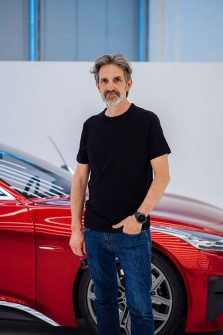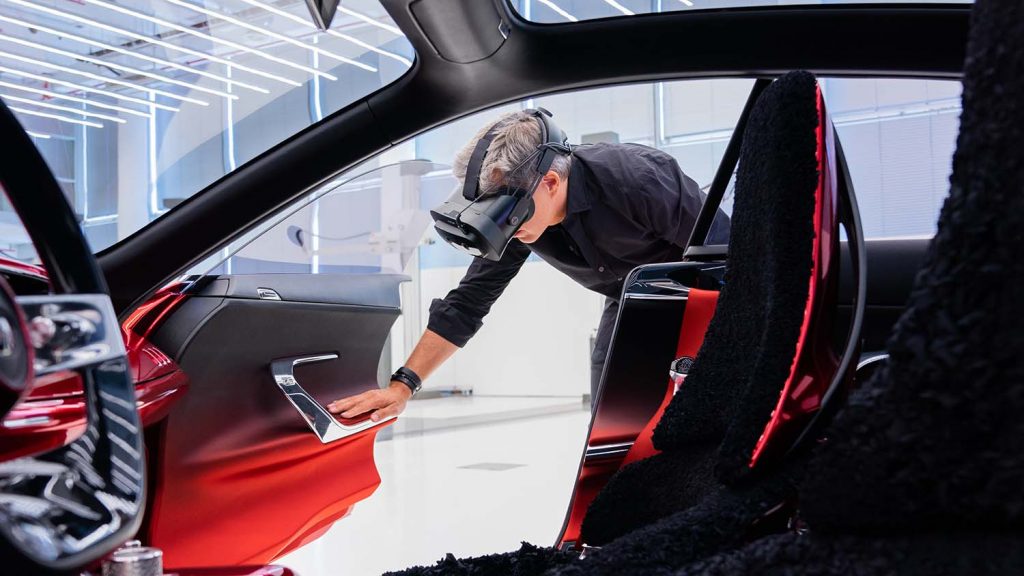The European Design Centre of KIA Motors has implemented Varjo XR-1 headsets for its global design reviews to be held in virtual reality.
The South Korean automotive company’s base in Frankfurt, Germany, now allows its design team to move seamlessly between the real and virtual car in front of them, making changes on the fly on concept cars of the future, as well as production models for both Europe and the global market.
Supported by Autodesk VRED, Kia’s visualisation processes able to move into a totally immersive photorealistic environment, helping bring down the time of a global design review ‘from days to an hour’.

“For the first time, we could literally see the metallic flakes in the paint and perceive the depth and quality of the material shaders,” says Thomas Unterluggauer, the centre’s creative manager for CGI.
“We could see the beauty of the details more than ever before in the virtual world. Varjo is the only device capable of this level of clarity and sharpness.”
Seeing more details in the car exterior was a breakthrough, but when Unterluggauer and the team got to explore the Varjo XR-1 mixed reality device – which featured in the D3D 30 list of technologies for 2020 – they realised it can help take their design work to new heights.
Designers are able to work with their colleagues in the physical design space they’re used to and collaborate on photorealistic, real-scale virtual car models while seeing their hands and bodies.
In an immersive mixed reality experience like this, they’re able to talk as they go, giving immediate feedback, driving a more engaging review process.
“Immersive collaboration works way more naturally than we expected. This is something I’ve always wished for and with the Varjo device, it’s now a reality,” says Gregory Guillaume, Kia Motors Europe VP Design.
The automotive design process has always relied on 2D reviews held on screens and powerwalls, followed by physical clay models and prototypes to further refine and develop the surfaces.
As manager of the studio’s digital department, Frank Hübbe knows all too well that a 2D model is always a projection that lacks volume.
“Although you can use keyboard, mouse, and screen to work efficiently in 2D, you’ll never get a fully realistic impression of the car,” he says. Today, Kia Europe’s designers are complementing their entire workflow with virtual and mixed reality.

For example, designers are able to review a virtual model directly against a physical model in the same room using the XR-1 headset, or even augment an existing clay model with virtual details.
“With VRED and the Varjo XR-1, you have the context of the real world and the flexibility of the virtual world,” Hübbe says.
Guillaume adds that, until now, if he wanted to discuss a model with the design management at Kia’s global headquarters; he’d have to fly to Korea to do it.
Reviewing a digital model with design management always took a minimum of four days, now it can be done in minutes, saving time, travel and money, he says.
“You’d think this is so much more complicated than a video call. But collaboration has been very reliable.
“That’s only possible if we trust what we’re seeing and the tools we’re using. It amazes me that something so complicated is working so naturally and easily.”






